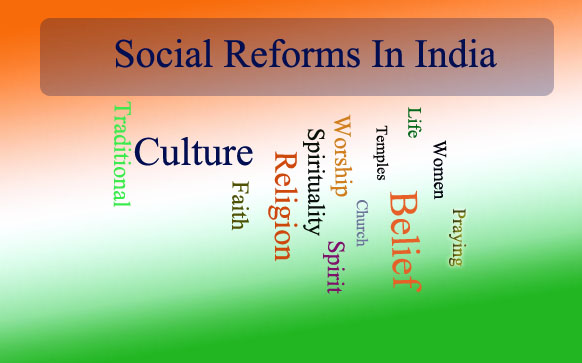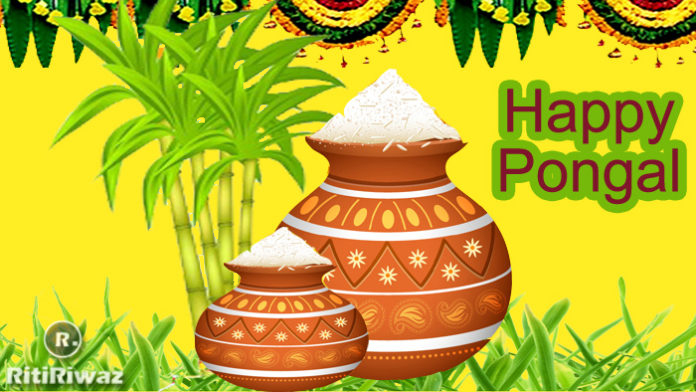Social Reforms In India

The history of the Indian civilization dates back to the first millennium BC. Agriculture became the primary occupation of the inhabitants. It provided a stable social order. The basic elements of the social structure, based on caste system, were laid down by the Vedas.
The Dharma Shastras were written, which formed the basis of the conduct of the classes. While Dharma meant the pursuit of a collective goal, Swadharma meant the pursuit of individual occupation, assigned to one’s caste with devotion. In the post-Vedic age, the Brahmins conducted the ritual and the Kshatriyas defended the territory. The Vaishyas were entrusted with business transactions, while the Sudras toiled in the field and remained in servitude to the other three. The land belonged to the villagers and the chieftains collected one-sixth of the agriculture produce as revenue as per the Dharma Shastras. The panchayats looked into the work of the villages and mediated between the ruler and the subjects.
Castes in India were governed by normative conduct, caste was conferred on the individual at the time of his birth, and it remained unchanged throughout his lifetime. Violation of the caste rules could lead to the lowering of the status of the individual. The practice of hypergamy led to upward mobility of a girl from a lower caste within the caste structure through marriage. The society was basically patriarchal with traces of matriarchy in some regions of the South and Northeast. In the four-tier social structure, only the upper three castes were allowed to participate in the affairs of the state. The caste unity and village self-rule declined in due course due to internal and external factors.
In the medieval period, the rise of Islam and the series of Muslim invasions of India changed the course of Indian history. This led to a religious upheaval. A number of socio-religious reformers emerged to put social and religious spirit into the Indians through the Bhakti Movement. The forerunner of the Hindu revivalist movement was Shankaracharya. The Bhakti movement emerged in the South in the 6th-8th century AD and in the North in the 14th-17th century AD. The movement played an important part in reducing the rigidities of the caste system. Among the chief exponents of the movement were Ramananda, Chaitanya, Kabir, and Guru Nanak Dev. They preached the ideology of Bhakti (Devotion) to God.
The Bhakti Movement helped in rejuvenating the society and reduced the distinctions of the caste systems among Hindus. Sufism also extended its influence over society, the Sufi saints worked for humanity at large, transcending all religious and communal distinctions. The movement had a social, political, and cultural influence on the people. Sufism helped to end the Hindu-Muslim rivalry and infused the ideals of solidarity and brotherhood between the two religions.
The British period was marked by an attempt to infuse colonial culture and ideology. Modern English education was imparted to the Indians to educate them to occupy the lower ranks in the administrative structure. This led to the emergence of the intellectual Indians, who worked towards social and religious reforms for the regeneration of the society.
Social reforms became an integral part of religious reforms in India and this was equally true of Brahmo Samaj, Prarthana Samaj, Arya Samaj, Rama Krishna Mission, and Theosophical Society in Hinduism as also among Muslims, Parses and Sikhs. The social reform movements have aimed at uprooting social evils. Raja Rammohan Roy was the harbinger of the social reforms movement in India. He launched a reform movement in 1829 known as Brahmo Samaj which worked for the evolution of a casteless society. He also worked for the abolition of Sati, polygamy, and untouchability.
The need to alleviate the status of women was felt by Raja Rammohan Roy and Iswarchandra Vidyasagar. Vidyasagar dug up old Sanskrit references and proved that Vedic texts sanctioned widow remarriage. His efforts were rewarded when the Hindu Widows Remarriage Act (1856) legalized the marriage of widows. Vidyasagar also did a lot in popularizing the cause of female education and was associated with no less than 35 girls’ schools in Bengal. In Bombay (now Mumbai), the students of Elphinstone Institute became the spearhead of the movement for women’s education and founded the Students Literary and Scientific Society.
Slavery in India was more akin to what may be termed as bonded-servant, bonded-labor type. In northern India slaves generally served as domestic servants, in South India slaves were mostly employed in cultivation. In 1843 slavery was declared illegal in India and all existing slaves were emancipated without any compensation to the slave-owners.
The history and course of the social reforms movement in the 20th century is marked by the coming into existence of a number of social organizations both at the all-India and provincial levels. The Indian National Social Conference, Bombay Social Reform Association, Mrs. Annie Besant’s Hindu Association, All-India Anti-Untouchability League (Later known as Harijan Seval Sangh), All India Depressed Classes Federation, Satya Sodhak Samaj in Maharashtra, and Shri Narayana Dharma Paripalana Sabha in Kerala are some of the main organizations who acted against social evils. The caste system was largely criticized by Jyotiba Rhule and Narayana Guru.
Though many social evils, like drinking, beggary, etc., received the attention of the social reformers in the 20th century, the two problems, viz., the condition of women and the depressed classes received greater attention. This is because of the dynamic leadership of Gandhiji and also due to the political overtones of the problem of the depressed classes.
India became the Sovereign Democratic Republic in 1950 with the framing and adoption of the Constitution. With respect to the ideology of social justice, the Constitution contains the Preamble, the Fundamental Rights, and the Directive Principles of State Policy. Democracy was chosen for India because it would help in furthering the cause of the social revolution. It promotes the liberal democratic ideals of adult suffrage, liberties for individuals and groups, a competing party system, an independent judiciary, and elected representatives.
Land reforms were carried out to break the old feudal socio-economic structure of rural India. These reforms were intended for the modernization of agriculture yield, especially of the major cereal crops, making India self-sufficient in food grains.
In spite of all efforts made by these great men of the past and present to rid the Indian society of the social evils, they continue to persist even after more than 60 years of independence. The dowry deaths, female foeticide, and other crimes against women are fairly common in our society. The difficulty is that the people do not seem to be sincere. They condemn social evils in public but they follow them in private.
Though some of the social reforms have failed to percolate among the masses they have helped to evolve and regenerate our country. The pace of social reforms should increase and we may in near future become a casteless and classless society, where all members may get the full opportunity for growth, progress, and prosperity.
Suggested Read: World Human Rights Day






